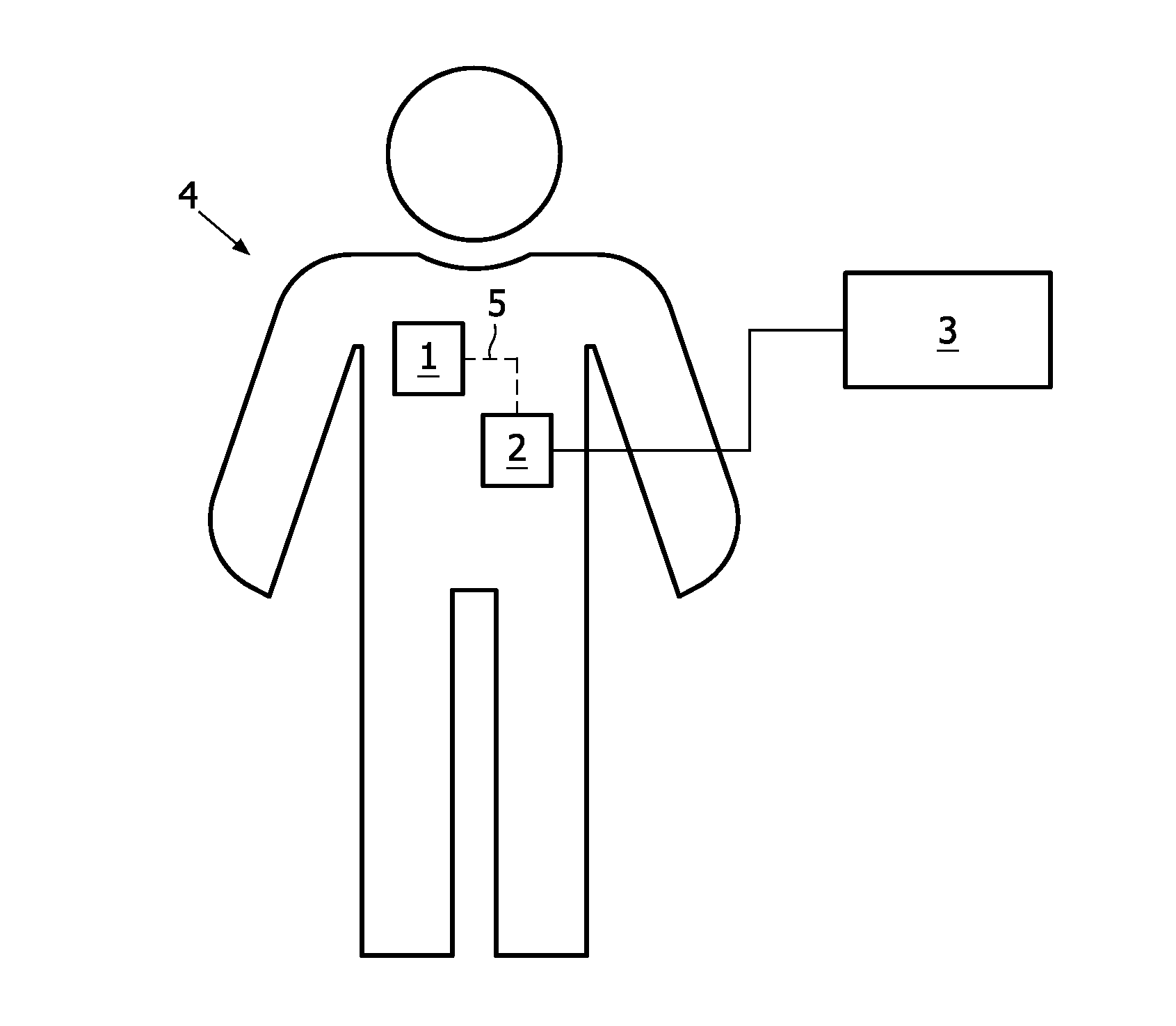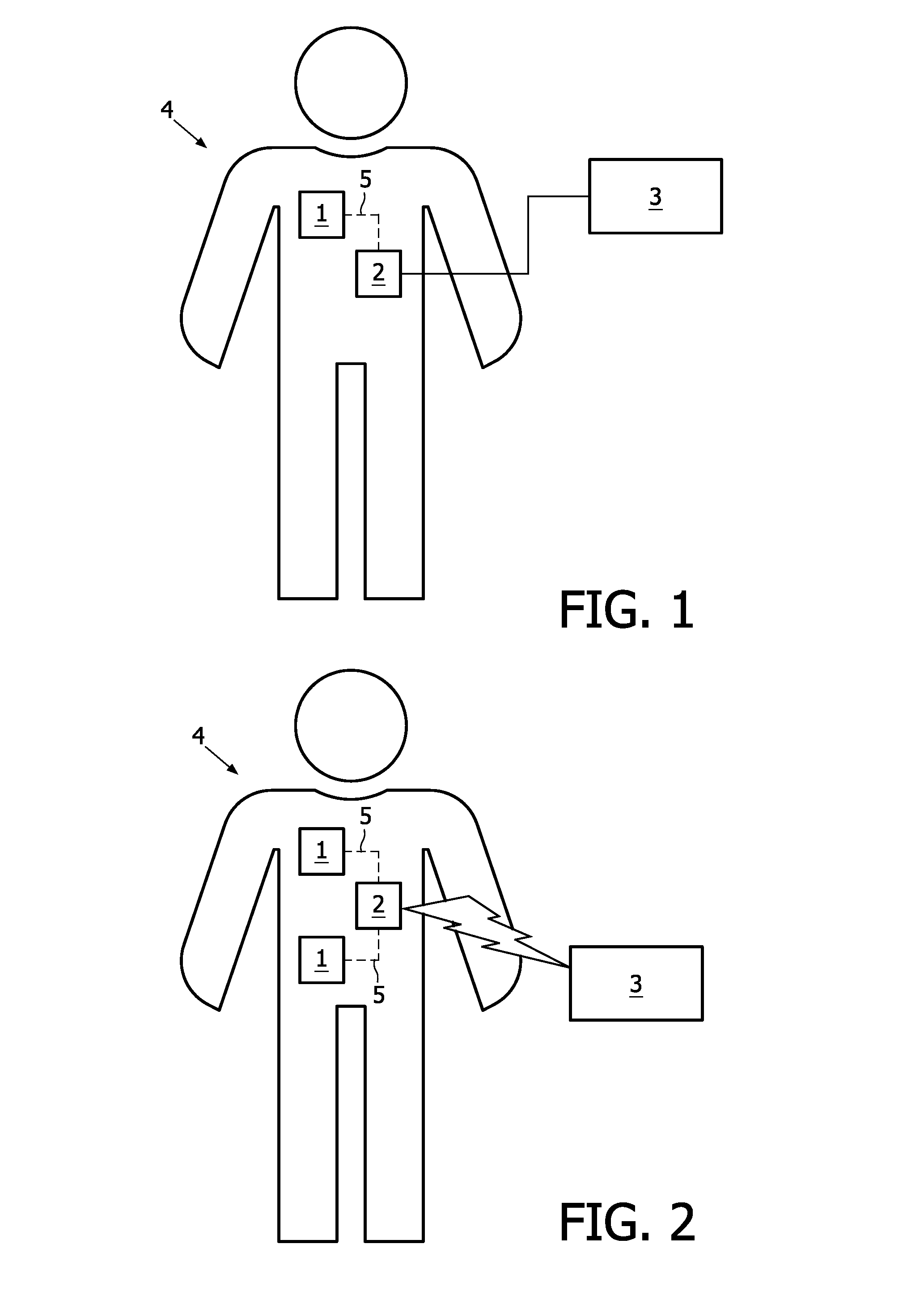Wireless patient monitoring using streaming of medical data with body-coupled communication
a patient monitoring and streaming technology, applied in the field of ultra low power wireless patient monitoring, can solve the problems of inability to use applications requiring very long life time and large energy consumption of radio standards, and achieve the effect of little power
- Summary
- Abstract
- Description
- Claims
- Application Information
AI Technical Summary
Benefits of technology
Problems solved by technology
Method used
Image
Examples
Embodiment Construction
[0038]From FIG. 1, schematically a system for wirelessly monitoring a patient 4 according to a first preferred embodiment of the invention can be seen. This system according to the first preferred embodiment of the invention comprises a medical sensor 1 for collecting medical data and a coupling interface 2 for coupling with a monitor 3, wherein the medical sensor 1 is attached to the patient's 4 body. The medical data collected by the medical sensor 1 is transmitted to the coupling interface via body-coupled communication 5. According to the first preferred embodiment of the invention, the monitor 3 is coupled with the coupling interface 2 via an electrical connection 6. This electrical connection 6 can be very short which means that the coupling interface 2 can be integrated into the monitor 3. Further, the monitor 3 itself can be adapted for body-coupled communication 5 with the medical sensor 1.
[0039]From FIG. 2, schematically a system for wirelessly monitoring a patient 4 accor...
PUM
 Login to View More
Login to View More Abstract
Description
Claims
Application Information
 Login to View More
Login to View More - R&D
- Intellectual Property
- Life Sciences
- Materials
- Tech Scout
- Unparalleled Data Quality
- Higher Quality Content
- 60% Fewer Hallucinations
Browse by: Latest US Patents, China's latest patents, Technical Efficacy Thesaurus, Application Domain, Technology Topic, Popular Technical Reports.
© 2025 PatSnap. All rights reserved.Legal|Privacy policy|Modern Slavery Act Transparency Statement|Sitemap|About US| Contact US: help@patsnap.com



